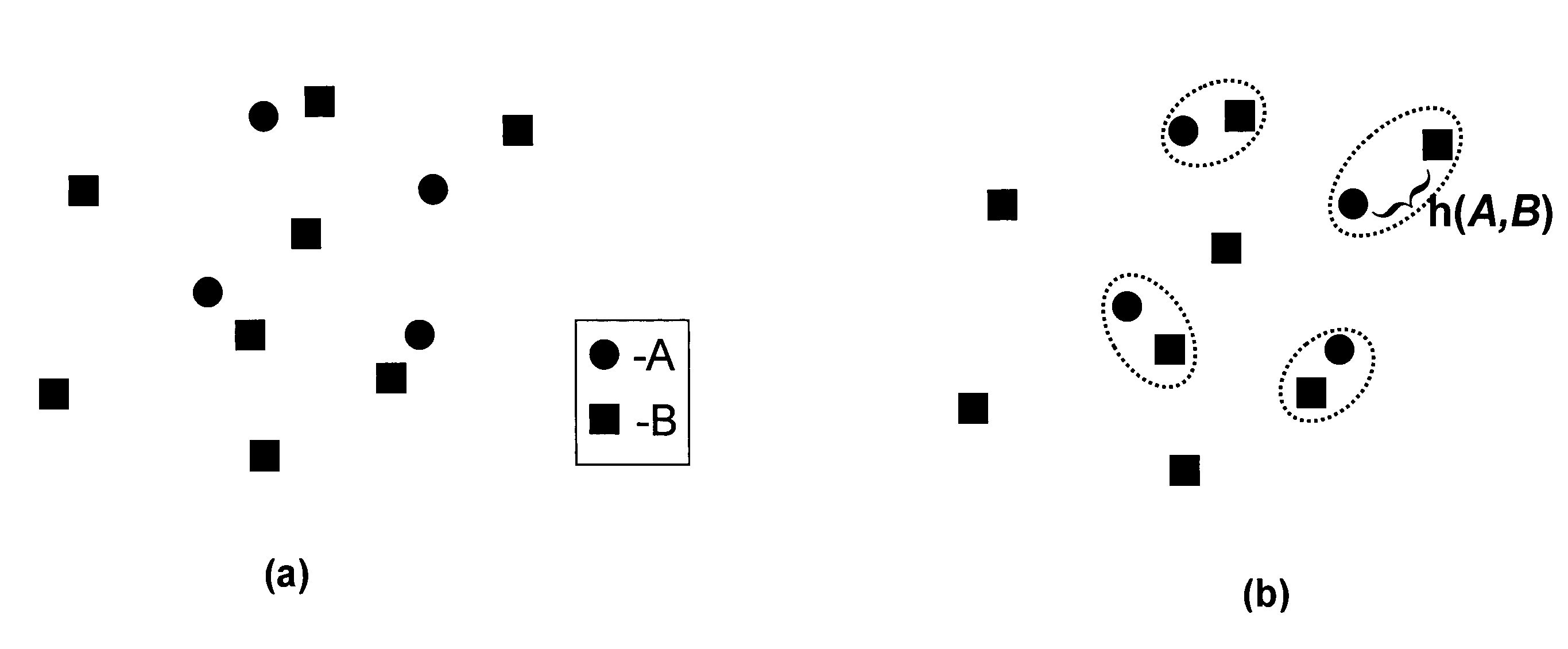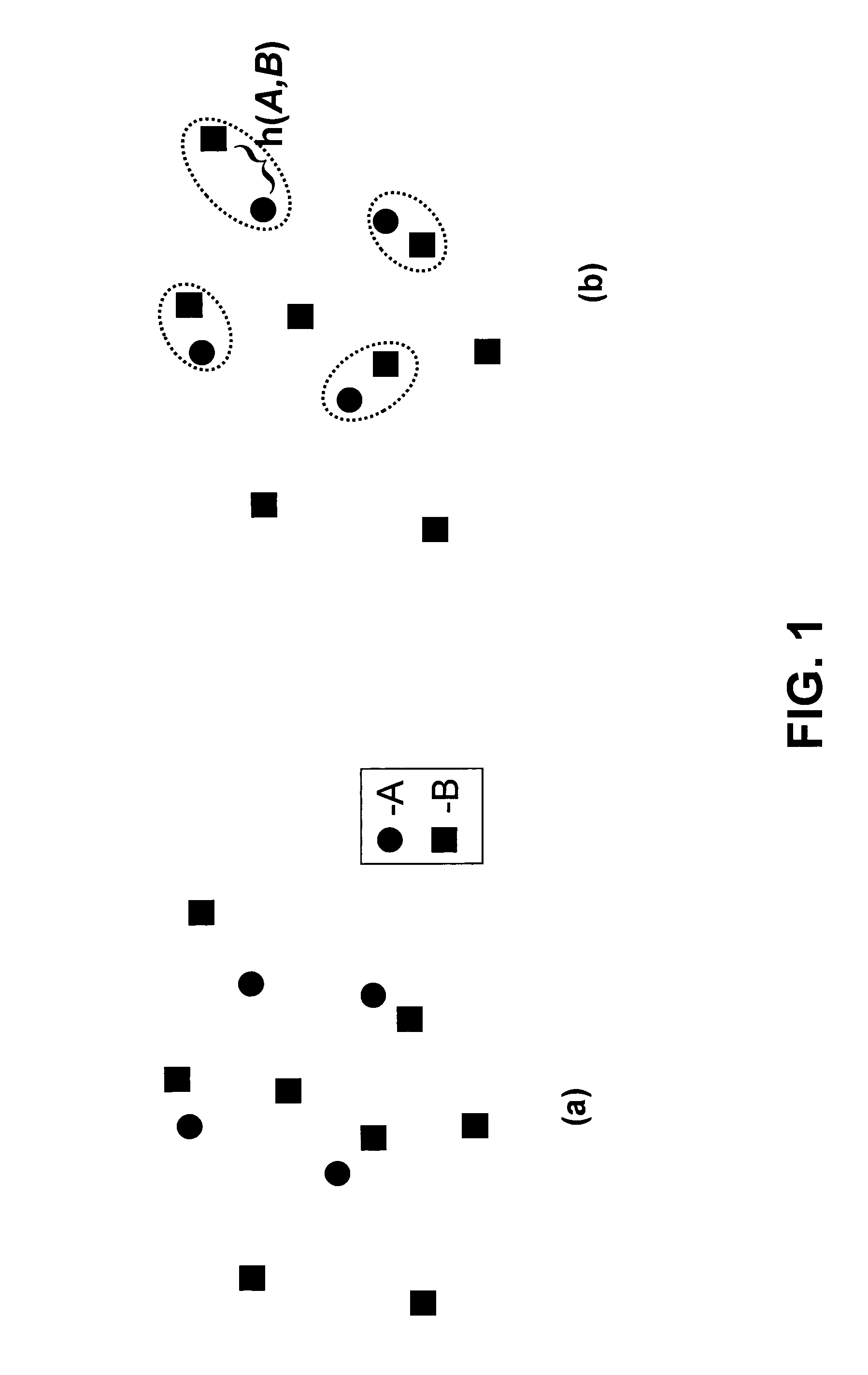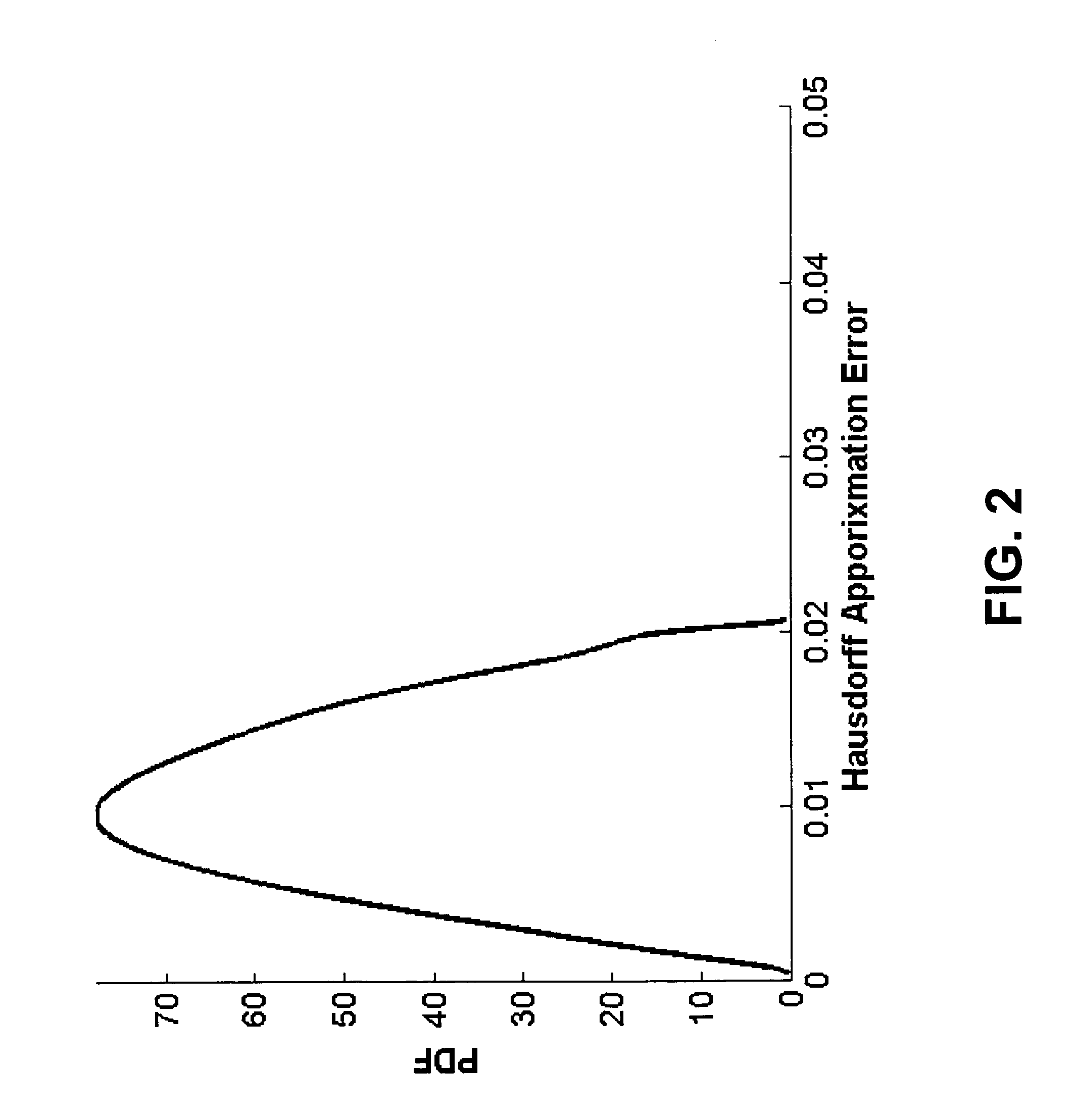Window-based method for approximating the Hausdorff in three-dimensional range imagery
a window-based method and three-dimensional range technology, applied in the field of pattern recognition, can solve the problems of discriminatory features, difficult task of positive identification, and inability to robustly adapt to variations such as facial pose, scene lighting, and facial expressions, and achieve the effect of efficiently, in time and memory, to compute the hausdor
- Summary
- Abstract
- Description
- Claims
- Application Information
AI Technical Summary
Benefits of technology
Problems solved by technology
Method used
Image
Examples
Embodiment Construction
[0017]The Hausdorff distance was originally designed to match binary edge images. See D. P. Huttenlocher et al., (1993). Modifications to the Hausdorff distance permit it to handle not only noisy edge positions, but also missing edges from occlusion, and spurious edges from clutter noise. See D. P. Huttenlocher et al., (1999). In edge image matching, an edge image can be conceptualized as a list of 2D points, where the points indicate the location of an edge. This concept can be generalized to 3D datasets where a list of 3D points is available.
[0018]For instance, let A={al, . . . , aP} represent the set of P points for the database template. For edge images, ai is a 2×1 column vector representing the (x, y) coordinate of the ith edge point in the template, and for 3D images ai represents a 3×1 column vector corresponding to 3D points located on the object. Similarly, let B={bl, . . . , bQ} represent the set of Q points for the probe image. In general, the template and probe image da...
PUM
 Login to View More
Login to View More Abstract
Description
Claims
Application Information
 Login to View More
Login to View More - R&D
- Intellectual Property
- Life Sciences
- Materials
- Tech Scout
- Unparalleled Data Quality
- Higher Quality Content
- 60% Fewer Hallucinations
Browse by: Latest US Patents, China's latest patents, Technical Efficacy Thesaurus, Application Domain, Technology Topic, Popular Technical Reports.
© 2025 PatSnap. All rights reserved.Legal|Privacy policy|Modern Slavery Act Transparency Statement|Sitemap|About US| Contact US: help@patsnap.com



